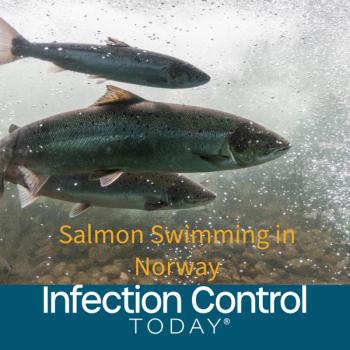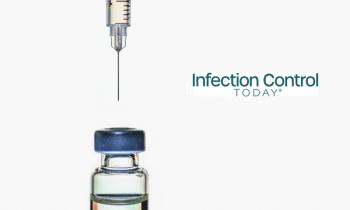
- Infection Control Today January/February 2020 Vol. 24 No. 1
- Volume 24
- Issue 1
How Infection Preventionists and Hospital Administrators Can Tackle 2 New Superbugs on the CDC’s Urgent List
Both C. auris and carbapenem-resistant Acinetobacter are quite hardy in the environment. It takes a lot to control spread.
Some strains of Candida auris resist all 3 classes of antifungals and 1 in 3 patients infected with the fungus dies. And carbapenem-resistant Acinetobacter causes pneumonia in addition to wound, bloodstream, and urinary tract infections.
No wonder then that when the US Centers for Disease Control and Prevention (CDC) released its report updating the state of infection prevalence and antibiotic-resistance threats in November, the agency added those 2 pathogens to its “urgent” category (joining Clostridioides difficile, carbapenem-resistant Enterobacteriaceae, and drug-resistant Neisseria gonorrhoeae-5 altogether. The other 2 categories are “concerning” and “serious”).
C. auris first popped up in Asia in 2009 and has quickly spread, becoming a cause of severe infection worldwide. It triggers outbreaks at healthcare facilities, and patients can carry it on their skin without being infected (making them silent carriers). What’s more, common healthcare disinfectants can’t always eliminate it.
Intensive care patients are particularly vulnerable to carbapenem-resistant Acinetobacter. It frequently contaminates surfaces and shared medical equipment. Some Acinetobacter resists nearly all antibiotics and few drugs are in development to treat it (there’s not much profit in it).
In 2017, carbapenem-resistant Acinetobacter caused an estimated 8500 infections in hospitalized patients and 700 estimated deaths in the US, according to the CDC. It’s a little more difficult to pinpoint the number of people in the US who’ve died from C. auris because patients often simultaneously suffer from other life-threatening illnesses.
These challenges, daunting as they may seem, are surmountable, says Arjun Srinivasan, MD, the associate director for healthcare-associated infection prevention programs at the CDC. “The strategies that we recommend to address antibiotic resistance are fundamentally the same for these 2 pathogens as they are for many of the others,” he says. “It’s working on improving antibiotic use, and in the case of Candida auris, it’s addressing antifungal use.”
In addition, both C. auris and carbapenem-resistant Acinetobacterare “quite hardy in the environment,” says Srinivasan. They spread easily to surfaces and can stay a long time. “So proper environmental cleaning and hand hygiene become even more important for these 2 pathogens.”
These will be among the many prevention and containment responses that infection preventionists (IPs) will help drive, says Sylvia Garcia, the director of infection control and prevention at the Joint Commission. She adds, however, that “we cannot lay this issue at only the IPs’ door. Superbugs require attention from the housekeeper to the CEO.”
IPs need information and the time to sort through it, says Garcia. That might include data specific to the organization about resistance patterns. They’ll want to check antibiotic stewardship programs, and hand hygiene compliance. They’ll need the most up-to-date information about effective control measures, including the latest from the CDC and the Society for Healthcare Epidemiology of America.
“Then the organization needs to create and implement a rational approach to controlling development and transmission of superbugs,” says Garcia. “I usually recommend that the IP be an active participant but not the leader of a multidisciplinary team to ensure that organizations’ specific risks are identified and real action plans are developed and implemented.”
Garcia’s responses beg the question: In this era of superbugs, do IPs get the respect they deserve? “I don’t think they do,” says Srinivasan. “I think that they have been underrecognized for a very long time and that they work incredibly hard. They have a very, very challenging job and they do it well.”
Just ask Scott Lorin, MD, the president of Mount Sinai Hospital’s Brooklyn campus. In May 2017, an elderly man died in the hospital’s intensive care unit. “We cultured essentially every aspect of the room Candida auris was everywhere,” Lorin tells ICT. “And this was a huge surprise for us.”
In fact, Lorin calls it his “aha” moment. With the possible exception of C. diff, you don’t usually see that amount of contamination by infectious diseases, he says. “We realized that we needed to put together a new approach, and that this was the most insidious and invasive bug we had ever witnessed.”
The hospital’s response involved a “hyper focused” approach in managing patients with C. auris, which “puts a lot of burden on our infection control team. Your infection control team really manages and coordinates the care of these patients. And that’s something that they didn’t have to do previously.” They also “intensely monitored the quality of environmental cleaning and the staff’s compliance with precaution measures.”
For instance, Mount Sinai’s infection control team made sure that nurses donned gowns and gloves before going into patient rooms. Then they made sure that nurses changed into other gowns and gloves before moving on to another patient’s room.
Srinivasan calls this the bread and butter of infection control. “The challenge is making sure that [these processes are] done all the time. Many of the infection preventionists are focusing on monitoring and making sure those practices are happening. Talking to providers when they’re not happening to try to find out why. And see areas where we can better implement working with environmental services to improve environmental cleaning practices.”
At the time, says Lorin, there was a dearth of literature on C. auris. “We had to put together our own roadmap, essentially a comprehensive plan that included special infection prevention protocols with direct support and system leadership.”
When CDC issued its report on antibiotic-resistant pathogens, New York state health regulators issued a report at about the same time that named the healthcare facilities that cared for someone infected, colonized, or possibly colonized with the fungus.
When CDC issued its report on antibiotic-resistant pathogens, New York state health regulators issued a report at about the same time that named the healthcare facilities that cared for someone infected, colonized, or possibly colonized with the fungus between January 1, 2016, and June 28, 2019 (Lorin’s hospital is on the list). They had kept the names of the particular facilities under wraps up until then.
The information was meant to help patients deciding on where to get care, but the New York report also notes that “the detailed information [in the report] is primarily intended for use by hospital infection preventionists....”
The report measured the number of IPs on the staffs of 175 hospitals. IP staffing levels in New York are measured as the number of patients for which 1 full-time equivalent IP is responsible. In 2018, the average IP in New York State was responsible for 89 inpatients and 228 total patients per day.
IPs in New York spent most of their time on surveillance (36%), department rounds (12%), daily isolation issues (8%), quality and performance improvement (8%), administrative policy and procedure development (7%), environment/construction rounds (6%), prevention in outpatient areas (5%), employee and occupational health (4%), emergency preparedness (4%), staff education, risk management, and other issues (9%).
As Srinivasan earlier alluded, time-or the lack of it-is the enemy when it comes to dealing with superbugs. “It takes time to put on a gown and gloves,” he says. “It takes time to clean your hand. It takes time to clean the environment. And when you’re running from patient to patient to patient, that is time that is precious, and it’s hard to make that time to do the right thing every single time. We need innovations in that area. I don’t think that’s a problem that we’ve solved. We’re not going to be able to solve it by adding time to the day.”
Lorin says that money is also an issue. “There’s a very significant cost for taking care of these patients, and none of us have budgeted for it,” says Lorin, adding that his hospital is currently doing some number-crunching research. “There’s the cost of 1-to-1 nursing or 1-to-1 nursing assistants, the cost of cleaning a room multiple times a day, the cost of isolating the patient, and the cost of dedicating equipment to the patient’s room.”
For instance, a dialysis machine stays in the room for the duration of the care for a patient with C. auris. These measures sound intense, but it’s been “100%” successful, says Lorin. “We have not had a case in a year and a half.”
Most of the time C. auris enters a hospital via transfer of patients from skilled nursing facilities (SNFs), Lorin says. “That was the source of the outbreak.”
Mount Sinai includes 7 different campuses and Lorin says that he has shared the protocols he developed with his sister hospitals, the CDC, the New York City Department of Health and Mental Hygiene, and the New York State Department of Health. They’re available to any SNFs that might want them, as well.
“Certainly, if they reached out to us-which they haven’t-we’d be happy to provide guidance or advice.”
Srinivasan wasn’t talking specifically about Lorin when he said that hospital administrators play a crucial role in fighting superbugs, but he might as well have been. “They are the ones who really are able to marshal the resources that might be necessary to deal with some of these problems,” says Srinivasan. “They have to support their infection prevention and control, and antibiotic stewardship programs.”
As Srinivasan said, and Lorin can attest to, C. auris took those on the frontlines of infection control somewhat by surprise. That was not the case with carbapenem-resistant Acinetobacter.
“Acinetobacter was already on the threats report list,” reminds Srinivasan. “It was previously designated as multidrug-resistant Acinetobacter, and it was in the serious category.” One of the enzymes contained in Acinetobactercan deactivate carbapenems. “And that is conferring carbapenem resistance to Acinetobacter, and that’s new. So that is something that we are concerned about.”
Despite their lethality, infection by superbugs is still a relatively rare occurrence in a country of almost 330 million people, and that makes tracking difficult.
“We have struggled somewhat on the healthcare side to get the type of data that we want and need to track these pathogens,” says Srinivasan. “The growth of the electronic health data that we use for the threat report in 2019, though, does give us a system that does allow us to get some of these estimates of the burden of these pathogens.”
Help for responders came in 2016 when CDC launched the Antibiotic Resistance Laboratory Network (AR Lab Network).
“That is not just looking and counting, that’s a response network,” says Srinivasan. “We know that there are thousands and thousands of isolates of concern that hospitals and health systems are sending into that AR Lab Network, and then getting real time information so that they cannot just track, but they can respond faster.”
Articles in this issue
almost 6 years ago
January/February 2020 Bug of the Monthalmost 6 years ago
Preparing for Special Pathogens: An IP Perspectivealmost 6 years ago
Copper Beds Vastly Cut Down on Amount of Surface BacteriaNewsletter
Stay prepared and protected with Infection Control Today's newsletter, delivering essential updates, best practices, and expert insights for infection preventionists.




